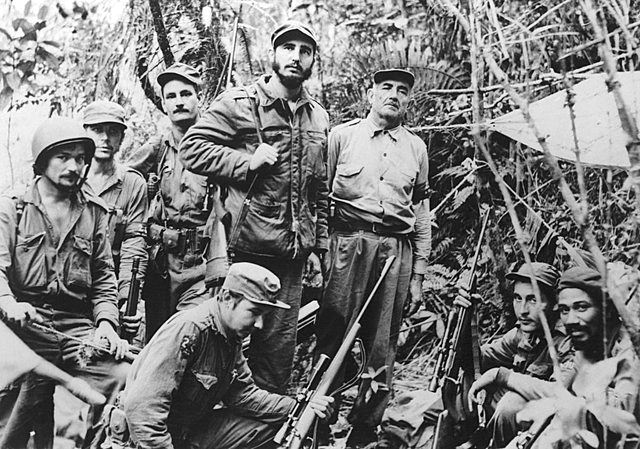In 1957, the New York Times brought Fidel Castro back from the dead. Only a year earlier, news reports about Castro’s death had been circling around the press. News agency UPI published a story based on a Cuban government report that claimed Castro had been killed and his rebellion put down. The world had no reason to doubt the report, and Castro, who had been doggedly hunted by the army of Cuban dictator Fulgencio Batista, had little desire to risk his life by emerging from his mountain hideout.
But one determined New York Times reporter would change the fate of the guerilla leader—and the country where he was struggling to bring about a revolution. The reporter’s name was Herbert Matthews.
“Fidel Castro and his 26 of July movement are the flaming symbol of this opposition to the regime,” Matthews wrote in his first Castro article for the Times. “The program is vague and couched in generalities, but it amounts to a new deal for Cuba, radical, democratic and therefore anti-Communist.”2 Matthews took a huge journalistic leap in drawing the conclusion that Castro was democratic and anti-communist. In 1957, virtually nothing was known about Fidel Castro and his 26th of July Movement. Still, Matthews made the leap without hesitating. The Times’s Cuba man went on to describe Castro’s childhood and background and cataloged almost every romanticized minute of his journey to the rebels’ mountain hideaway. For almost three full columns of type, Matthews wrote about the government roadblocks he passed, an all-night drive across the Cuban countryside, using his wife as “camouflage” (as he put it), meeting up with one of Castro’s scouts, talking in whispers in the jungle, and eventually encountering Castro himself. “The personality of the man is overpowering,” Matthews swooned. “It was easy to see that his men adored him and also to see why he has caught the imagination of the youth of Cuba all over the island. Here was an educated, dedicated fanatic, a man of ideals, of courage and of remarkable qualities of leadership.”
Matthews went on to speak about some of Castro’s men before closing by directly quoting Castro in the final column of the article. “Above all,” he quoted Castro as saying, “we are fighting for a democratic Cuba and an end to the dictatorship.” Then, “to show that he deals fairly” with his soldiers, Matthews wrote, one of the rebels brought out a fat roll of money. Matthews quoted Castro as saying that while Batista’s soldiers were paid just $72 a month, Cuba would pay its men $100 a month when he would become Cuba’s leader.
The next day, Matthews penned another Castro article, which reiterated the same themes of his first article. He enthusiastically repeated his claim that Castro was a democratic reformer, even a liberator, who wanted to wrest power from the Batista dictatorship in order to hand it over to the people of Cuba. Castro and his men, Matthews wrote without even attempting to hide his admiration for the young rebel, “are giving their lives for an ideal and for their hopes of living in a clean, democratic Cuba.”3
The last statement was key. Since his very first article, Matthews had championed the idea that Castro was pro-democracy and therefore “anti-communist.” This question of the revolution’s attitude toward communism was everything to everyone in 1957, a time when the United States and the USSR were locked in tension at the very height of the Cold War. To the Soviet Union, Castro’s revolution looked like a potential opportunity to expand the borders of communism right up to the shores of America. To the people of Cuba, the question of Castro’s link to communism concerned the kind of country they would have and the lives they would lead under this new “liberator.” And, most consequentially of all—especially where reporting of the New York Times was concerned—to the United States, Castro’s embrace or rejection of communism would determine the specific policy America would adopt toward the island nation just ninety miles off its southern coast.


